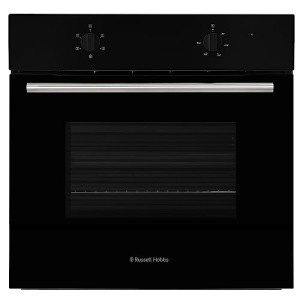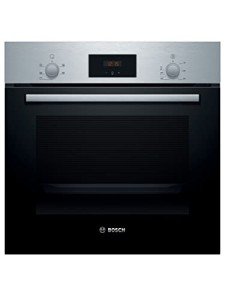
Best Integrated Single Oven
Add a review FollowOverview
-
Founded Date November 11, 1901
-
Sectors Pharmacy
-
Posted Jobs 0
-
Viewed 20
Company Description
11 Strategies To Refresh Your Single Oven
The Ultimate Guide to Single Ovens: Features, Benefits, and FAQs
When it concerns contemporary kitchen devices, the single oven stands apart as a flexible and necessary tool for any cooking lover. In today’s busy world, where benefit fulfills cooking craftsmanship, single ovens play an essential role in meal preparation. Understanding the functions, benefits, and types of single ovens can simplify the procedure of choosing the ideal appliance for your kitchen. This comprehensive guide intends to provide an extensive appearance at single ovens, their specs, and answers to frequently asked concerns.

What is a Single Oven?
A single oven is a kitchen home appliance that features one primary cooking compartment. It is designed to perform different cooking functions such as baking, roasting, broiling, and more. Unlike double ovens, that include 2 different cavities, single ovens make the most of space effectiveness, making them ideal for smaller sized kitchens or those who regularly prepare meals for a few individuals.

The Anatomy of a Single Oven
In order to value the functionality of a single oven, comprehending its crucial components is essential:
| Component | Description |
|---|---|
| Cooking Cavity | Main space where food What Is A Single Oven put for cooking. |
| Control board | Interface for picking cooking modes and adjusting temperature. |
| Heating Elements | Metal coils that generate heat (typically discovered at the top and bottom). |
| Oven Door | Glass panel that enables exposure into the cooking space. |
| Racks | Detachable shelves that accommodate various meals at different heights. |
Kinds Of Single Ovens
Single ovens come in various types based on their heating techniques and styles. Here are some popular options:
-
Conventional Ovens: Utilize gas or electrical power for a traditional cooking experience. They provide constant heat for baking and roasting.
-
Convection Ovens: Equipped with a fan that flows hot air, leading to quicker cooking times and even heat circulation.
-
Steam Ovens: Use steam to prepare food, keeping wetness and nutrients. Perfect for much healthier cooking methods.
-
Wall Ovens: Built into the wall to save space; they can improve kitchen visual appeals while providing performance.
-
Microwave Ovens: While not a standard oven, modern microwave ovens can likewise bake and roast, providing convenience for quick meal preparation.
Functions to Look for in a Single Oven
When buying a single oven, consider the following functions to guarantee you pick an appliance that fits your cooking needs:
-
Capacity: Ensure the oven’s size accommodates your normal cooking volume. Standard capabilities normally range from 4.5 to 6 cubic feet.
-
Temperature level Range: Look for an oven that offers a large temperature level range for different cooking methods.
-
Self-Cleaning Options: Self-cleaning modes bypass the requirement for severe chemicals, making upkeep simpler.
-
Smart Technology: Wi-Fi-enabled designs allow remote operation and tracking through smartphone applications.
-
Interior Lighting: Bright, incandescent or LED lighting helps monitor your food without unlocking.
Typical Sizes and Capacities of Single Ovens
| Type | Average Capacity (cubic feet) | Width (inches) | Height (inches) |
|---|---|---|---|
| Standard Conventional | 5.0 – 6.0 | 30 | 28 – 30 |
| Compact/Apartment Size | 3.0 – 4.0 | 24 | 28 – 30 |
| Wall Oven | 4.5 – 5.0 | 24 – 30 | 28 – 30 |
Advantages of Using a Single Oven
Buying a single oven offers various benefits for both amateur cooks and skilled chefs alike:
-
Space Efficiency: A single oven inhabits less area than a double oven, making it best for smaller cooking areas.
-
Affordable: Generally more economical compared to double ovens, both in initial purchase and energy intake.
-
Flexibility: Capable of carrying out numerous cooking techniques, making it ideal for a variety of recipes.
-
Ease of Use: With a smaller sized cooking area, heat circulation tends to be more efficient, streamlining the cooking procedure.
-
Maintenance: Fewer parts indicate less intricacy when it concerns cleaning and repair work.
Frequently Asked Questions (FAQs)
What is the typical life-span of a single oven?
A single oven typically lasts in between 10 to 15 years, depending upon use, upkeep, and the quality of the appliance.
How can a single oven conserve energy?
Single ovens require less power than double ovens, and many designs are created with energy effectiveness in mind, minimizing total energy consumption.
Can a stove change a standard oven?
Yes, a stove can replace a basic oven as it offers comparable cooking functions along with much faster cooking times.
Are single ovens suitable for large families?
While single ovens can accommodate a good amount of food, larger households might discover that a double oven or an extra single oven suits their requirements more successfully.
How frequently should I clean my single oven?
It is advised to clean your oven every 3 to six months, depending on usage, to preserve health and efficiency, especially with models that include self-cleaning choices.
Is setup tough for a single oven?
The majority of single ovens come with uncomplicated installation directions. Nevertheless, consulting an expert is suggested for safe and correct setup, especially for gas ovens.
The single oven remains a cornerstone appliance in cooking areas around the globe. Its versatility, efficiency, and space-saving style make it an appealing choice for many households. Whether you are an occasional cook or a cooking aficionado, choosing the best single oven can significantly boost your cooking experience. With the details shared in this guide, possible buyers can make a notified decision, guaranteeing they select an oven that best matches their cooking needs and way of life.
